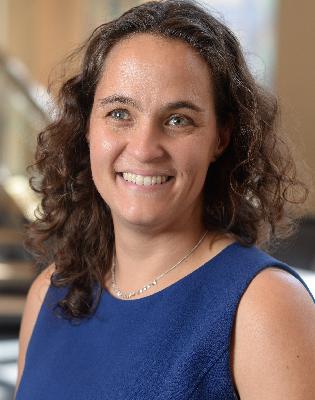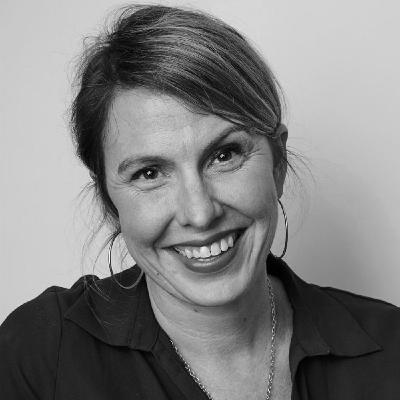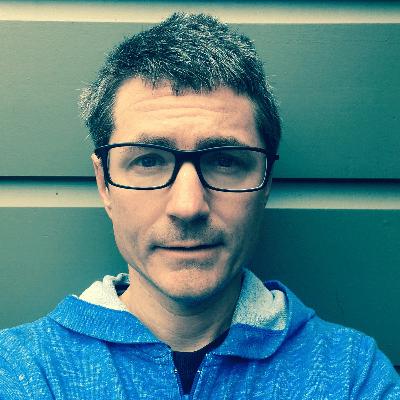61: The Paradoxes of Product Discovery (ft. Teresa Torres)
Description
Show Notes
Product Discovery coach, teacher, and author Teresa Torres joins Peter and Jesse to explore the messy reality of organizational change and cross-functional collaboration. She discusses why external coaching has limits, how individual contributors can drive change within resistant systems, and what the rise of AI means for blurring roles between product, design, and engineering teams.
Learn more about Teresa Torres and her teaching at https://producttalk.org/
Learn more about Jesse James Garrett and his coaching and consulting at https://jessejamesgarrett.com/
Learn more about Peter Merholz and his new digital book “Design Org Dimensions” at https://petermerholz.com/
Transcript
Jesse: I’m Jesse James Garrett,
Peter: and I’m Peter Merholz.
Jesse: And we’re finding our way,
Peter: navigating the opportunities
Jesse: and challenges
Peter: of design and design leadership.
Jesse: On today’s show, Teresa Torres, product discovery coach and educator, and author of the book Continuous Discovery Habits, joins us to look at the changing landscape of digital product development from the product side. We’ll talk about what a coach can and can’t do for organizations and leaders, where product and design leaders get off track in driving meaningful outcomes, and what the new wave of generative AI means for the relationship between product and design.
Peter: Hi Teresa. Thank you so much for joining us.
Teresa: Thanks for having me. I’m excited to do this.
Peter: So I’m gonna start with a very easy question. Well easy to ask. I dunno how difficult it is to answer, which is: just how do you introduce yourself these days? I’ve known you now for 15 years, and so I’m curious how you’ve evolved since we first met.
Teresa: Yeah, I mean, I still introduce myself as a product discovery coach. I’m now an author, so that’s new in the last 15 years. But you know what’s funny is I don’t do a lot of coaching anymore. I mostly do a lot of curriculum design. I still do coaching through our office hours and things like that, but it used to be, my primary mode of engaging with people was I coach teams in depth over time. And that’s kind of changed. I now do a lot of curriculum design and we, our primary delivery mechanism is courses.
Peter: Say a little bit more about that. When we worked together I was embedded within design teams and, you know, you were coaching us through these product discovery engagements at both OpenTable and then again at Snagajob, and there was a curriculum component to it at that time, I remember, but I’m curious how that’s shifted or evolved for you and, why more focus on curriculum than maybe the kind of hands-on coaching?
From Coaching to Curriculum Development
Teresa: Yeah, a few reasons. So yeah, I started out as a coach. What that meant was I worked with a cross-functional product team for roughly 12 weeks, sometimes a little longer for the teams that needed it. But our goal in those 12 weeks was just to build really strong discovery habits. It was everything from: how do we collaborate as a cross-functional team, what does a good customer interview look like, how do we run quick assumption tests that we can rely on, h ow to start with clear outcomes, kind of the all the habits you see in Continuous Discovery Habits.
And I think just ’cause of the nature of my personality, I get bored when I do the same thing over and over again. And so I started creating a formal curriculum behind my coaching practice, ’cause I just got sick of telling teams the same thing over and over again. So then they would basically go through a content module. They would try to apply it in their own practice and then they would come to coaching.
And what I found eventually was that the things that we would cover in coaching were more like, here’s what’s hard in my unique organizational context, and not, here’s what’s hard about the skill of interviewing. And that’s because the content was getting good enough that it was helping them build their skill, but it didn’t help them with the messiness of, like, but my sales team doesn’t want me to talk to a customer.
And so I realized that one of the challenges with coaching is you need a leader who’s willing to invest in it. It’s kind of a high value, which means high cost, service. And I just wanted to get some of the skill development out to more teams.
And so with online courses, you can offer it at a much lower price point. A lot more people can engage. We still do, I say we ’cause me and some of my instructors still do, coaching with some of the organizations that we go a little bit deeper with. But I would say primarily I do curriculum design to support our suite of courses.
The Product Discovery Mindset
Jesse: So tell me a little bit more about what you mean when you talk about product discovery and who you work with inside these organizations to support the development of this practice skillset. What would you call it? It’s almost a mindset, isn’t it?
Teresa: it is a mindset. There’s several mindsets. There’s several skills… I mean, there’s like the academic term of like knowledge, skills, and abilities, KSA. It sort of spans a lot of things. I think the big thing for product discovery, I try to keep this really simple. How do we know we’re building the right stuff?
And every team in order to build something, has to make decisions about what to build. How do we know those are the right decisions? How do we have good feedback loops with our customers to help steer us along the way? I know since your audience is a lot of designers, I will be upfront about a lot of these practices came from design, but came from a particular type of design.
Jesse, I know we’ve talked about like, and both of you… Design agencies and like these practices of research and human-centered design and feedback from customers.
I think what’s changing is, in the early days of the internet, we didn’t have the right people on our teams to do that research. And now companies are starting to invest in cross-functional teams that are building those skills. And so we’re bringing it in-house. Product teams are doing it themselves, instead of going out and hiring research firms or going out and hiring design firms. And so it’s led to a more team approach. It’s led to a more, just, cross-functional approach.
And then I also think the pacing of it has changed quite a bit. So when we outsource something, we tend to hire a company for a big project. When we’re doing it internally, we can do it more continuously because we’re working on a product more continuously.
Jesse: Do you engage with design teams in your practices? Is that a part of what you do or are you really focused on…
Teresa: yeah.
Jesse: …the product management side?
Teresa: So in my coaching, I always coached the cross-functional product trio. So it was typically a product manager, a designer, and an engineer. Trios look different at every company. Sometimes they’re quads, sometimes they’re quints. Whatever the cross-functional team is, what roles you have.
So, like, some teams that I worked with had a user researcher as the fourth person. Some teams had a product marketing manager as the fourth person. Some data products have a data scientist, sometimes in lieu of a designer, sometimes in addition to a designer.
So when I say product trio, it’s really just the cross-functional product team. Whatever roles are involved and however many people that is, once you’re more than five people, it gets hard to move quickly. I would say generally it’s three to five people. And then we see the same thing in our courses. So we have product managers, designers, user researchers. And even lately, more engineers enrolling in our programs.
Peter: I am curious how you think things have progressed, because in my interactions and conversations with my clients and other design leaders, it feels like so many organizations are still struggling to do just the basic blocking and tackling of things like product discovery or dual track agile or contemporary product development, or whatever you want to call it.
There’s still a lot of PMs or POs getting requirements from the business and funneling it out to a group of people and saying, go build that. And I’m wondering if, and maybe now given your perhaps broader perspective, ’cause you’re engaging with more people through teaching than you probably could through coaching, like, are we still bending towards progress as a whole or are we, it feels at times, like, we’re kind of stuck or sometimes we go backwards. Like, what’s your take on, just, like, how things are going in terms of organizations adopting continuous discovery, product discovery, these practices.
The Unevenness of Change
Teresa: I think we’re still making progress. I























